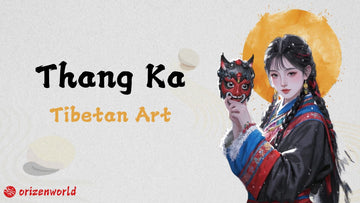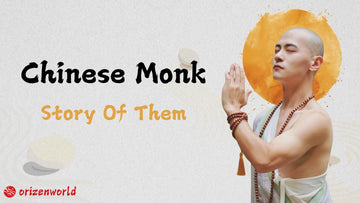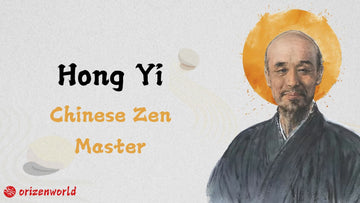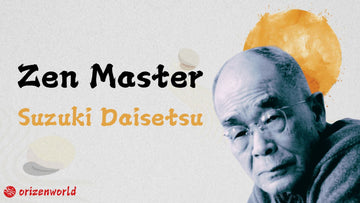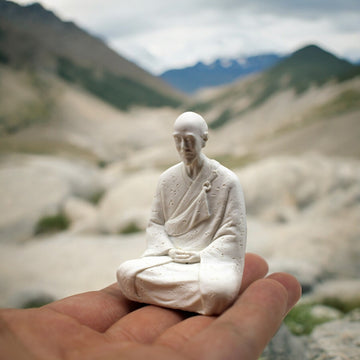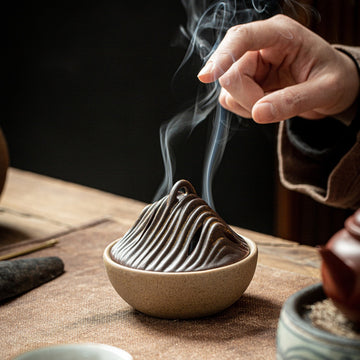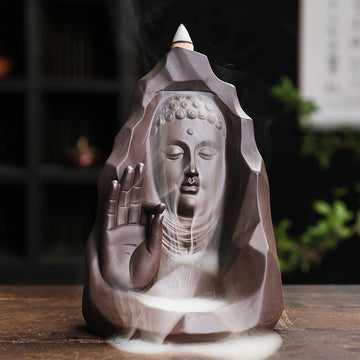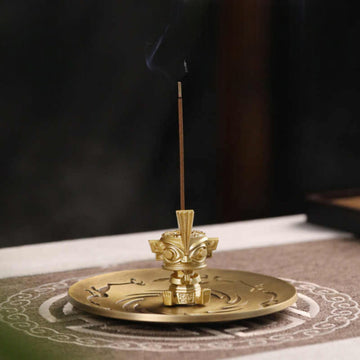Visiting Tibet is an unforgettable experience, offering stunning peaks, breathtaking landscapes, and a rich cultural tapestry. Among the many treasures you’ll encounter is Thangka, a captivating traditional Tibetan art form. Thangka paintings are intricate works of art, often created on fabric or canvas, depicting deities, mandalas, or sacred stories. These vibrant pieces are more than just decorations; they hold deep spiritual significance in Tibetan Buddhism, serving as tools for meditation and teaching.
As you explore Tibet, the beauty and detail of Thangka paintings will undoubtedly leave you in awe, connecting you to the profound stories and traditions of the region. Join us today as we delve into the fascinating world of Thangka and uncover the stories behind this unique art form.
Thangka, meaning "scroll painting" in Tibetan, originated in the 7th century CE, with a history spanning over 1,300 years. Its roots trace back to ancient Indian Buddhist art, which was introduced to Tibet alongside the spread of Buddhism. Over time, Thangka evolved and flourished in Tibet, becoming both a religious and cultural tradition. Initially painted as religious murals, Thangka later developed into portable scrolls made of paper, silk, and other materials, showcasing a variety of styles and innovations.
The historical development of Thangka art is deeply intertwined with the spread of Buddhism in Tibet. In the 7th century, the introduction of Buddhism laid the foundation for this art form, providing the religious and cultural context for its emergence.

During the Tubo Dynasty in the 8th century, as Buddhism became the state religion, Thangka art experienced significant growth and began to flourish. The 13th-century Sakya Period marked a golden era for Thangka, with the Sakya school dominating Tibetan Buddhism and driving advancements in artistic techniques and styles. Later, during the Ming and Qing Dynasties, Thangka art further evolved under Chinese imperial influence, giving rise to unique schools and traditions that enriched its cultural legacy.
Today, Thangka is celebrated as a classic artistic expression in Asia, especially in China, where it is cherished as a gift or collectible. Beyond its spiritual significance, Thangka has become a symbol of Tibetan heritage, reflecting centuries of artistic and cultural evolution. Its enduring appeal continues to captivate art lovers and collectors worldwide.
Thangka holds profound spiritual and symbolic importance in Tibetan Buddhism. These intricate paintings depict Buddhas, Bodhisattvas, deities, historical figures, and mythical stories, serving as objects of worship and veneration. Each Thangka is more than a piece of art; it is a sacred medium for conveying Buddhist teachings and values, inspiring devotion and mindfulness among practitioners.
Depiction of Deities, Mandalas, and Sacred Scenes
Thangka art is rich in symbolism, with every element carrying deep meaning. For instance, depictions of Buddha Shakyamuni and Avalokiteshvara (Guanyin) embody wisdom and compassion. Avalokiteshvara often holds a vase of pure water, symbolising the power to eliminate suffering and bring peace. The vibrant colours used in Thangka also carry significance: red represents passion and vitality, yellow symbolises nobility and prosperity, blue conveys calmness and wisdom, and green signifies life and renewal. Sacred patterns like lotuses, Dharma wheels, and treasure vases amplify the spiritual essence of Thangka. The lotus, for example, symbolises purity and enlightenment, while the Dharma wheel signifies the eternal truth of Buddhist teachings.
Feng Shui Functions of Thangka
Beyond its religious use, Thangka also serves as a tool for enhancing energy flow. Placing Thangka in homes or offices is believed to harmonise the environment and bring positive energy. By positioning these sacred paintings appropriately, they can improve the energy of a space, creating a sense of harmony and balance. Prominently displayed Thangka paintings with sacred figures are thought to attract blessings, protect from misfortune, and bring good fortune.
The intricate designs and serene imagery of Thangka also have a calming effect, offering mental clarity and spiritual purification for those who admire it. As both a spiritual and artistic treasure, Thangka continues to inspire awe and reverence, bridging the gap between art, religion, and daily life.

Thangka plays a vital role in Tibetan Buddhism, serving as a sacred tool for meditation and teaching. Thangka painters, often referred to as “monk-artists,” are both skilled artisans and devout practitioners of Buddhism.
Their artistic journey begins at an early age, typically around five, when they start learning the intricate techniques of Thangka painting. They also memorise texts like the Treatise on Proportions, which outlines the precise dimensions and features of Buddhist deities, ensuring each painting adheres to spiritual and symbolic guidelines.
Thangka paintings are integral to Buddhist rituals and meditation practices. The detailed depictions of deities, mandalas, and sacred scenes serve as visual aids, guiding practitioners in focusing their minds during meditation. These paintings help evoke a deeper connection to the teachings of Buddhism, fostering mindfulness and spiritual growth. For practitioners, observing a Thangka can be a transformative experience, allowing them to reflect on the profound truths and principles of their faith.
Creating and observing Thangka requires patience and dedication, making it a powerful medium for spiritual reflection. In today's fast-paced world, engaging with Thangka art offers a unique way to find inner peace. The meticulous process of painting a Thangka helps the artist cultivate calmness, focus, and a sense of purpose, while viewers are drawn into its serene beauty, encouraging introspection and tranquillity. Thangka continues to be a timeless bridge between artistic expression and spiritual enlightenment.
Thangka art relies on carefully selected materials to achieve its timeless beauty and durability. The primary base material is canvas, traditionally made from fine hemp or cotton cloth. These fabrics are specially treated to create a smooth, resilient surface that resists deformation over time.

For colours, Thangka artists use pigments derived from natural minerals and plants, such as cinnabar, lapis lazuli, and coral powder. These vibrant, durable pigments are meticulously ground, refined, and mixed to achieve brilliant hues that endure for centuries. The brushes used for Thangka painting are typically crafted from soft materials like goat or rabbit hair, with fine, flexible tips ideal for rendering intricate details.
Thangka painting demands precision and skill, with techniques passed down through generations. To create the signature golden brilliance of Thangka, artists outline figures and adornments with pure gold powder mixed with adhesive. This gold detailing is then polished using a gemstone tool, enhancing its luminosity and adding a radiant, opulent touch to the artwork.
The most critical step in the process is the "opening of the eyes," where the artist carefully paints the eyes of the central figure. This moment requires immense concentration, as it imbues the painting with spiritual vitality, symbolising the awakening of its divine essence.
Through the harmonious blend of natural materials and traditional techniques, Thangka embodies a unique fusion of artistic craftsmanship and spiritual devotion, resulting in creations that are as enduring as they are captivating.
Thangka can be classified based on their background colours, each with its own significance. White-background Thangka, also known as "彩唐," features vibrant multi-coloured paintings on a white base, symbolising purity and clarity. Gold Thangka (金唐) uses a radiant gold background, often representing the divine or spiritual enlightenment. Silver Thangka (银唐) features silver tones, symbolising calmness and serenity. Red-background Thangka (红唐) employs a red base, signifying power and energy, while Black-background Thangka (黑唐) creates striking contrasts, representing protection and the mystical aspects of Buddhism.

The Mahakala Thangka is a classic black Thangka, with black symbolising wisdom and depth in Buddhism. Mahakala's black armour serves as a gateway, guiding people toward the hall of enlightenment and profound understanding.
Thangka themes range widely, primarily divided into religious and non-religious categories. Religious Thangka includes depictions of Buddhist deities, biographies of great lamas, mythological stories, doctrinal teachings, astronomical charts, medical illustrations, and more. These pieces serve as tools for meditation, teaching, and worship. Non-religious Thangka, such as wind-horse (风马), snowy mountain, and animal-themed paintings, focus on natural landscapes and everyday life, offering a glimpse into Tibetan culture beyond its spiritual framework.
The vibrant diversity of Thangka types ensures that each painting carries a unique story and purpose. Whether used for religious devotion or artistic expression, these works reflect the profound beauty and complexity of Tibetan heritage.
The activation of a Thangka, known as kaiguang (开光), is a sacred ritual in Tibetan Buddhism that imbues the painting with divine energy and religious significance. Beyond its role as a religious practice, it also represents deep respect for the art and faith it embodies. Thangka, a sacred form of Tibetan art, is not only a vessel of religious devotion but also a cultural treasure. Activation is a process by which the spiritual figures or symbols within the Thangka are blessed, granting them divine power and a special spiritual connection.
Benefits of Activation
An activated Thangka is believed to possess unique protective and spiritual benefits. It is said to ward off evil, attract positive energy, and serve as a source of blessings for health, peace, and wisdom. For devotees, it becomes a sacred object for meditation and worship, strengthening their faith and spiritual practice.

Tibetan Buddhist masters preside over the activation ritual, infusing the Thangka with sacred energy through faith and blessings, granting it the power to ward off evil and bring peace, wisdom, and good fortune to its owner.
Process of Activation
The activation ritual is typically conducted in a monastery by highly respected monks or lamas. The ceremony begins with offerings, such as flowers, incense, candles, and purified water. Monks chant mantras and scriptures, invoking blessings upon the Thangka. Holy water is sprinkled over the painting, and the ritual concludes with the lama lightly tapping the Thangka with consecrated prayer beads, symbolising the infusion of divine energy.
Significance of the Ritual
Through the activation process, the Thangka is transformed from a work of art into a spiritual talisman. It becomes a medium for driving away negativity, fostering harmony, and channeling positive energy.
Post-Activation Practices
Activated Thangkas are typically displayed in temples or homes for worship. Devotees offer incense, water, and prayers regularly, maintaining a deep connection to the divine energy that the Thangka represents.
In addition to large Thangkas, miniature Thangkas can be made into pendants for personal wear. Wearing a Thangka pendant is believed to bring protection, blessings, and positive energy. However, it is important to avoid wearing it in impure or disrespectful situations, ensuring it remains a sacred and spiritual accessory.
Proper preservation is essential to maintaining the beauty and longevity of a Thangka. These sacred artworks are delicate and require specific handling, storage, and restoration techniques to prevent damage and fading over time.
Proper Handling and Display
To preserve a Thangka, avoid placing it in humid areas, as moisture can cause the colours to fade or the fabric to deteriorate. In regions with high humidity, such as southern climates, it is recommended to periodically air the Thangka to keep it dry. Additionally, Thangka should never be exposed to direct sunlight, as prolonged exposure can cause the fabric to expand and the paint to crack or discolour. A controlled temperature and humidity environment are ideal for display. Avoid prolonged exposure to smoke, as it can yellow the surface and diminish the vibrancy of the artwork. Dust should be removed gently using a dry, soft cloth, avoiding wet cleaning methods or chemical cleaners.
Restoration Techniques
When not displayed, Thangkas should be carefully wrapped in newspaper (for its anti-moisture properties), followed by a plastic covering, and stored in a wooden box, preferably made of camphor wood to prevent insect damage. Anti-insect agents can be added for further protection. To prevent long-term storage damage, Thangkas should be aired once or twice a year, particularly during the autumn, under indirect sunlight for 1–2 minutes to prevent mildew. If rolled for storage, ensure the brocade borders are pressed flat, and place layers of soft cotton paper between the painting and the fabric to maintain uniform thickness.
These methods ensure Thangkas remain preserved as both artistic treasures and spiritual symbols for generations to come.
What is the purpose of a thangka?
A Thangka is a sacred Tibetan Buddhist painting that serves as a spiritual tool for meditation, worship, and teaching. It often depicts deities, Buddhas, Bodhisattvas, or sacred symbols, and is used by practitioners to focus their minds during meditation or prayer. Thangkas also play a role in religious rituals and festivals, symbolising the teachings and spiritual wisdom of Buddhism.
Which state is thangka from?
Thangka art originates from Tibet, a region located in the Himalayas in Asia. It is an integral part of Tibetan Buddhist culture and has been practiced for centuries. Though it is deeply rooted in Tibetan traditions, Thangka art has also spread to other regions influenced by Tibetan Buddhism, including Nepal, Bhutan, and parts of India.
Why are thangkas so expensive?
Thangkas are expensive due to the time, skill, and materials required to create them. Traditional Thangkas involve intricate handwork, with artists using rare and high-quality materials such as gold leaf, gemstones, and mineral-based paints. The meticulous process of creating a Thangka, along with its spiritual significance, makes it a valuable and costly item. The cost also reflects the cultural and religious importance attached to the artwork.
What is the meaning of thangkas?
Thangkas are not just artworks; they are symbolic representations of spiritual teachings in Tibetan Buddhism. They are visual aids for meditation and prayer, helping practitioners connect with divine energies. The imagery on a Thangka can represent teachings on wisdom, compassion, enlightenment, and protection. Essentially, Thangkas are a means of conveying the deep philosophical and religious aspects of Buddhism.
How can you tell if a thangka is real?
To determine if a Thangka is authentic, look for signs of craftsmanship, materials, and the artist's skill. Traditional Thangkas are made using high-quality materials like cotton or silk, with vibrant, natural pigments. Real Thangkas often feature fine details, such as gold leaf outlining or gemstone accents, and should reflect the accurate proportions and iconography according to Buddhist traditions. If possible, verify the artist’s lineage or origin, as authentic Thangkas are usually created by experienced and well-trained artists from the Tibetan Buddhist tradition.

